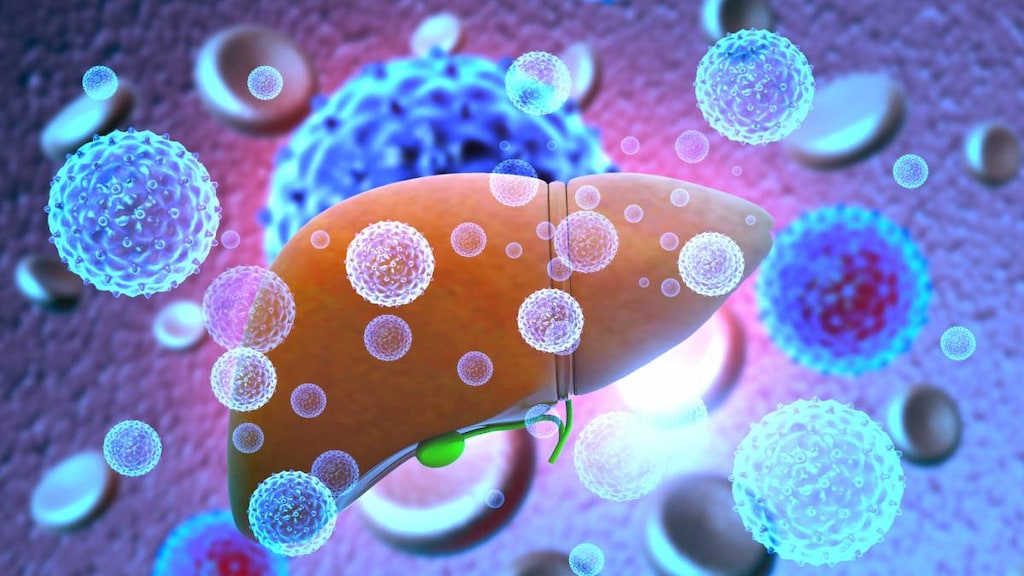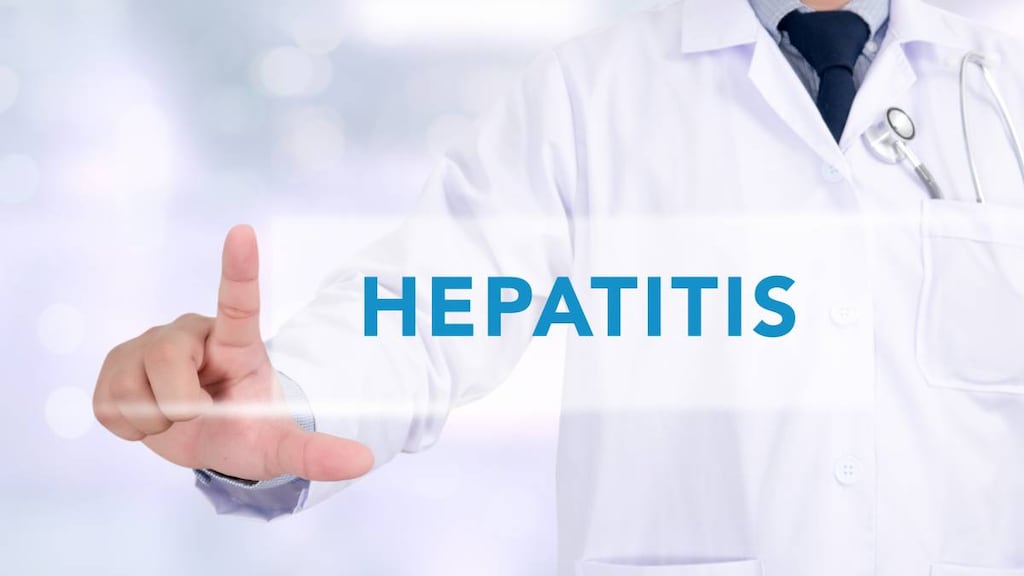Boxed Warning
Hepatitis B virus reactivation:
Test all patients for evidence of current or prior hepatitis B virus (HBV) infection before initiating treatment with sofosbuvir. HBV reactivation has been reported in hepatitis C virus (HCV)/HBV co-infected patients who were undergoing or had completed treatment with HCV direct acting antivirals and were not receiving HBV antiviral therapy. Some cases have resulted in fulminant hepatitis, hepatic failure, and death. Monitor HCV/HBV co-infected patients for hepatitis flare or HBV reactivation during HCV treatment and post-treatment follow-up. Initiate appropriate patient management for HBV infection as clinically indicated.
Dosage Forms
Excipient information presented when available (limited, particularly for generics); consult specific product labeling.
Tablet, Oral:
Sovaldi: 200 mg, 400 mg
Pharmacology
Mechanism of Action
Sofosbuvir, a direct-acting antiviral agent against the hepatitis C virus, is a prodrug converted to its pharmacologically active form (GS-461203) via intracellular metabolism. It inhibits HCV NS5B RNA-dependent RNA polymerase, essential for viral replication, and acts as a chain terminator.
Pharmacokinetics/Pharmacodynamics
Metabolism
Hepatic; forms pharmacologically active nucleoside (uridine) analog triphosphate GS-461203; dephosphorylation results in the formation of nucleoside inactive metabolite GS-331007
Excretion
Urine (80%; primarily as metabolite); feces (14%)
Time to Peak
~0.5 to 2 hours
Half-Life Elimination
0.4 hours
Protein Binding
~61% to 65%
Use in Specific Populations
Special Populations: Renal Function Impairment
AUC0-∞ was higher in mild (eGFR ≥50 and <80 mL/minute/1.73 m2), moderate (eGFR ≥30 and <50 mL/minute/1.73 m2), and severe (eGFR <30 mL/minute/1.73 m2) renal impairment.
Special Populations: Hepatic Function Impairment
AUC0-24 was higher in moderate and severe hepatic impairment.
Use: Labeled Indications
Chronic hepatitis C: Treatment of genotype 1, 2, 3, or 4 chronic hepatitis C virus (HCV) infection in adults and genotype 2 or 3 chronic HCV infection in pediatric patients ≥3 years of age, without cirrhosis or with compensated cirrhosis, as a component of a combination antiviral treatment regimen.
Use: Off Label
Chronic hepatitis C, genotype 1, 2, 3, or 4 (decompensated cirrhosis)yes
Based on the AASLD/IDSA Recommendations for Testing, Managing, and Treating Hepatitis C guidelines, sofosbuvir, in combination with daclatasvir with or without ribavirin, is effective and recommended for treatment of hepatitis C virus genotype 1, 2, 3, or 4 infection in patients with decompensated cirrhosis. Hepatitis C treatment guidelines are constantly changing with the advent of new treatment therapies and information; consult current clinical practice guidelines for the most recent treatment recommendations.
Chronic hepatitis C, genotype 1, 2, 3, 4, 5, or 6 (liver transplant recipients)yes
Based on the AASLD/IDSA Recommendations for Testing, Managing, and Treating Hepatitis C guidelines, sofosbuvir, in combination with daclatasvir and ribavirin, is an effective and recommended regimen for treatment of hepatitis C virus genotype 2, 3 infection in liver transplant recipients with or without cirrhosis (including decompensated cirrhosis) and recommended alternative regimen for treatment of genotype 5 or 6 in patients without cirrhosis or with compensated cirrhosis. Sofosbuvir, in combination with daclatasvir and ribavirin or simeprevir with or without ribavirin, is an effective and recommended alternative regimen for treatment of hepatitis C virus genotype 1 or 4 infection in liver transplant recipients without cirrhosis or with compensated cirrhosis. Hepatitis C treatment guidelines are constantly changing with the advent of new treatment therapies and information; consult current clinical practice guidelines for the most recent treatment recommendations.
Chronic hepatitis C, genotype 2, 3, 5, or 6 (renal transplant recipients)yes
Based on the AASLD/IDSA Recommendations for Testing, Managing, and Treating Hepatitis C guidelines, sofosbuvir, in combination with daclatasvir and ribavirin, is an effective and recommended alternative regimen for treatment of hepatitis C virus genotype 2, 3, 5, or 6 infection in renal transplant recipients without cirrhosis or with compensated cirrhosis. Hepatitis C treatment guidelines are constantly changing with the advent of new treatment therapies and information; consult current clinical practice guidelines for the most recent treatment recommendations.
Contraindications
There are no contraindications listed in the manufacturer's labeling. When administered with ribavirin and peginterferon alfa, the contraindications to ribavirin and peginterferon alfa also apply. See Ribavirin and Peginterferon Alfa monographs.
Canadian labeling: Additional contraindications (not in US labeling): Hypersensitivity to sofosbuvir or any component of the formulation; males whose female partners may become pregnant
Dosage and Administration
Dosing: Adult
Chronic hepatitis C (CHC) infection (monoinfection or coinfected with HIV-1): Oral: Note: Combination therapy with ribavirin alone or ribavirin/peginterferon is not a recommended regimen in HCV treatment guidelines for patients with HCV (treatment-naive or treatment-experienced), regardless of genotype (AASLD/IDSA 2018).
Genotype 1:
Treatment-naive or peginterferon + ribavirin treatment-experienced patients without cirrhosis (alternative regimen): 400 mg once daily in combination with simeprevir or daclatasvir for 12 weeks (AASLD/IDSA 2018).
Patients with decompensated cirrhosis (Child-Pugh class B or C) (off-label use): 400 mg once daily in combination with daclatasvir and ribavirin for 12 weeks (if ribavirin-ineligible give in combination with daclatasvir only for 24 weeks) (AASLD/IDSA 2018).
Liver transplant recipients without cirrhosis or with compensated cirrhosis (Child-Pugh class A) (alternative regimen) (off-label use): 400 mg once daily, in combination with daclatasvir and ribavirin or simeprevir with or without ribavirin, for 12 weeks (AASLD/IDSA 2018).
Genotype 2:
Treatment-naive or peginterferon + ribavirin treatment-experienced patients (alternative regimen): 400 mg once daily in combination with daclatasvir for 12 weeks (without cirrhosis) or 16 to 24 weeks (with compensated cirrhosis [Child-Pugh class A]) (AASLD/IDSA 2018).
Patients with decompensated cirrhosis (Child-Pugh class B or C) (off-label use): 400 mg once daily in combination with daclatasvir and ribavirin for 12 weeks (if ribavirin-ineligible give in combination with daclatasvir only for 24 weeks) (AASLD/IDSA 2018).
Liver transplant recipients with or without cirrhosis, including decompensated cirrhosis (Child-Pugh class B or C) (off-label use): 400 mg once daily in combination with daclatasvir and ribavirin for 12 weeks (AASLD/IDSA 2018).
Renal transplant recipients without cirrhosis or with compensated cirrhosis (Child-Pugh class A) (alternative regimen) (off-label use): 400 mg once daily in combination with daclatasvir and ribavirin for 12 weeks (AASLD/IDSA 2018).
Genotype 3:
Treatment-naive or peginterferon + ribavirin treatment-experienced patients without cirrhosis (alternative regimen): 400 mg once daily in combination with daclatasvir for 12 weeks (AASLD/IDSA 2018).
Treatment-naive patients with compensated cirrhosis (Child-Pugh class A) (alternative regimen): 400 mg once daily in combination with daclatasvir with or without ribavirin for 24 weeks (AASLD/IDSA 2018).
Patients with decompensated cirrhosis (Child-Pugh class B or C) (off-label use): 400 mg once daily in combination with daclatasvir and ribavirin for 12 weeks (if ribavirin-ineligible give in combination with daclatasvir only for 24 weeks) (AASLD/IDSA 2018).
Liver transplant recipients with or without cirrhosis, including decompensated cirrhosis (Child-Pugh class B or C) (off-label use): 400 mg once daily in combination with daclatasvir and ribavirin for 12 weeks (AASLD/IDSA 2018).
Renal transplant recipients without cirrhosis or with compensated cirrhosis (Child-Pugh class A) (alternative regimen) (off-label use): 400 mg once daily in combination with daclatasvir and ribavirin for 12 weeks (AASLD/IDSA 2018).
Genotype 4:
Patients with decompensated cirrhosis (Child-Pugh class B or C) (off-label use): 400 mg once daily in combination with daclatasvir and ribavirin for 12 weeks (if ribavirin-ineligible give in combination with daclatasvir only for 24 weeks) (AASLD/IDSA 2018).
Liver transplant recipients without cirrhosis or with compensated cirrhosis (Child-Pugh class A) (alternative regimen) (off-label use): 400 mg once daily, in combination with daclatasvir and ribavirin or simeprevir with or without ribavirin, for 12 weeks (AASLD/IDSA 2018).
Genotypes 5 and 6:
Liver transplant recipients without cirrhosis or with compensated cirrhosis (Child-Pugh class A) (alternative regimen) (off-label use): 400 mg once daily in combination with daclatasvir and ribavirin for 12 weeks (AASLD/IDSA 2018).
Renal transplant recipients without cirrhosis or with compensated cirrhosis (Child-Pugh class A) (alternative regimen) (off-label use): 400 mg once daily in combination with daclatasvir and ribavirin for 12 weeks (AASLD/IDSA 2018).
Dosing: Geriatric
Refer to adult dosing.
Dosing: Pediatric
Note: Prior to initiating therapy, test patient for evidence of hepatitis B infection (current or prior).
Chronic hepatitis C infection (monoinfection or coinfected with HIV-1); treatment-naive or treatment-experienced without cirrhosis or with compensated cirrhosis (Child-Pugh class A): Note: Use in combination with ribavirin. Treatment-experienced refers to patients who have failed prior treatment with an interferon-based regimen with or without ribavirin. Sofosbuvir dosage reduction is not recommended; however, other hepatitis C treatments (eg, ribavirin) may require dosage adjustments for toxicity. If other hepatitis C treatments require discontinuation due to toxicity, then discontinue sofosbuvir as well.
Children ≥3 years and Adolescents:
Patient weight:
<17 kg: Pellets: Oral: 150 mg once daily.
17 to <35 kg: Pellets, tablets: Oral: 200 mg once daily.
≥35 kg: Pellets, tablets: Oral: 400 mg once daily.
Treatment duration based on genotype:
Genotype 2: 12 weeks.
Genotype 3: 24 weeks.
Administration
Tablets: Administer with or without food.
Pellets: Administer with or without food. May be sprinkled on one or more spoonfuls of non-acidic soft foods (eg, pudding, chocolate syrup, mashed potatoes, ice cream) at or below room temperature; gently mix. Swallow entire contents within 30 minutes of mixing; do not chew to avoid bitter aftertaste.
Storage
Tablets and pellets: Store below 30°C (86°F). Dispense only in original packaging.
Drug Interactions
Amiodarone: Sofosbuvir may enhance the bradycardic effect of Amiodarone. Avoid combination
Antidiabetic Agents: Direct Acting Antiviral Agents (HCV) may enhance the hypoglycemic effect of Antidiabetic Agents. Monitor therapy
Erdafitinib: May increase the serum concentration of P-glycoprotein/ABCB1 Substrates. Monitor therapy
Lasmiditan: May increase the serum concentration of P-glycoprotein/ABCB1 Substrates. Avoid combination
Lumacaftor and Ivacaftor: May decrease the serum concentration of P-glycoprotein/ABCB1 Substrates. Lumacaftor and Ivacaftor may increase the serum concentration of P-glycoprotein/ABCB1 Substrates. Monitor therapy
Modafinil: May decrease the serum concentration of Sofosbuvir. Avoid combination
OXcarbazepine: May decrease the serum concentration of Sofosbuvir. Avoid combination
P-glycoprotein/ABCB1 Inducers: May decrease the serum concentration of Sofosbuvir. Avoid combination
P-glycoprotein/ABCB1 Inhibitors: May increase the serum concentration of P-glycoprotein/ABCB1 Substrates. P-glycoprotein inhibitors may also enhance the distribution of p-glycoprotein substrates to specific cells/tissues/organs where p-glycoprotein is present in large amounts (e.g., brain, T-lymphocytes, testes, etc.). Monitor therapy
PHENobarbital: May decrease the serum concentration of Sofosbuvir. Avoid combination
Primidone: May decrease the serum concentration of Sofosbuvir. Avoid combination
Ranolazine: May increase the serum concentration of P-glycoprotein/ABCB1 Substrates. Monitor therapy
Rifabutin: May decrease the serum concentration of Sofosbuvir. Avoid combination
Rifapentine: May decrease the serum concentration of Sofosbuvir. Avoid combination
Tacrolimus (Systemic): Sofosbuvir may decrease the serum concentration of Tacrolimus (Systemic). Monitor therapy
Tenofovir Alafenamide: Sofosbuvir may increase the serum concentration of Tenofovir Alafenamide. Monitor therapy
Tipranavir: May decrease the serum concentration of Sofosbuvir. Avoid combination
Vitamin K Antagonists (eg, warfarin): Direct Acting Antiviral Agents (HCV) may diminish the anticoagulant effect of Vitamin K Antagonists. Monitor therapy
Adverse Reactions
Adverse reactions reported with combination therapy.
>10%:
Central nervous system: Fatigue (30% to 59%), headache (24% to 36%), insomnia (15% to 25%), chills (2% to 17%), irritability (10% to 13%)
Dermatologic: Pruritus (11% to 27%), skin rash (8% to 18%)
Gastrointestinal: Nausea (22% to 34%), decreased appetite (18%), diarrhea (9% to 12%)
Hematologic & oncologic: Anemia (6% to 21%), neutropenia (<1% [interferon-free regimen] to 17% [interferon-containing regimen])
Neuromuscular & skeletal: Asthenia (5% to 21%), myalgia (6% to 14%)
Respiratory: Flu-like symptoms (6% to 16%)
Miscellaneous: Fever (4% to 18%)
1% to 10%:
Gastrointestinal: Increased serum lipase (>3 times ULN: ≤2%)
Hematologic & oncologic: Thrombocytopenia (≤1%)
Hepatic: Increased serum bilirubin (>2.5 times ULN: 3%)
Renal: Increased creatine phosphokinase (≥10 times ULN: 1% to 2%)
<1%, postmarketing, and/or case reports: Angioedema, bradycardia, lactic acidosis (Smith 2019), pancytopenia, reactivation of HBV, severe depression, suicidal ideation
Warnings/Precautions
Disease-related concerns:
- Diabetes: Rapid reduction in hepatitis C viral load during direct-acting antiviral (DAA) therapy for hepatitis C may lead to improvement in glucose metabolism in patients with diabetes, potentially resulting in symptomatic hypoglycemia if antidiabetic agents are continued at the same dose. Monitor for changes in glucose tolerance and inform patients of the risk of hypoglycemia during DAA therapy, particularly within the first 3 months. Modification of antidiabetic therapy may be necessary (Ciancio 2018; Dawood 2017; Hum 2017).
- Hepatitis B virus reactivation: [US Boxed Warning]: Hepatitis B virus (HBV) reactivation has been reported in hepatitis C virus (HCV)/HBV co-infected patients who were receiving or had completed treatment with HCV direct-acting antivirals and were not receiving HBV antiviral therapy; some cases have resulted in fulminant hepatitis, hepatic failure, and death. Test all patients for evidence of current or prior HBV infection prior to initiation of sofosbuvir; monitor HCV/HBV co-infected patients for hepatitis flare or HBV reactivation during treatment and post-treatment follow-up. Initiate treatment for HBV infection as clinically indicated. HBV reactivation has been reported in HBsAg positive patients and in patients with serologic evidence of resolved HBV infection (ie, HBsAg negative and anti-HBc positive) and is characterized by an abrupt increase in HBV replication manifested as a rapid increase in serum HBV DNA level; reappearance of HBsAg may occur in patients with resolved HBV infection. Risk of HBV reactivation may be increased in patients receiving certain immunosuppressants or chemotherapeutic agents.
Concurrent drug therapy issues:
- Amiodarone: Symptomatic bradycardia (some requiring pacemaker intervention) has occurred in patients receiving amiodarone and a sofosbuvir-containing regimen. Fatal cardiac arrest occurred in a patient taking amiodarone and the ledipasvir/sofosbuvir combination product. Bradycardia generally occurred within hours to days following coadministration, however some cases have occurred 2 weeks following the initiation of sofosbuvir. The risk of bradycardia may be increased in patients taking beta blockers or patients with underlying cardiac comorbidities and/or advanced liver disease. Bradycardia generally resolves following discontinuation of HCV treatment. Coadministration of amiodarone and sofosbuvir in combination with another DAA is not recommended. However, if patients have no treatment alternatives, patients should have inpatient cardiac monitoring for the first 48 hours, followed by daily outpatient or self-monitoring of heart rate for at least the first 2 weeks of treatment. Due to the long half-life of amiodarone, cardiac monitoring (as described) is also recommended if amiodarone was discontinued just prior to beginning treatment with sofosbuvir. Patients should seek medical attention immediately if they experience fainting or near-fainting, dizziness, lightheadedness, malaise, weakness, excessive tiredness, shortness of breath, chest pains, confusion or memory problems.
- Drug-drug interactions: Potentially significant interactions may exist, requiring dose or frequency adjustment, additional monitoring, and/or selection of alternative therapy. Consult drug interactions database for more detailed information.
Special populations:
- Hepatic impairment: Safety and efficacy have not been established in patients with decompensated cirrhosis.
Other warnings/precautions:
- Appropriate use: Do not use as monotherapy; use only as part of a multiple drug regimen for treatment of HCV; consult current HCV treatment guidelines for guidance (AASLD/IDSA 2018).
Monitoring Parameters
Baseline (within 12 weeks prior to treatment initiation) CBC, INR, hepatic function (albumin, total and direct bilirubin, ALT, AST, alkaline phosphatase), calculated GFR; baseline (obtain any time prior to treatment initiation) HCV genotype and subtype, quantitative HCV viral load. During treatment, monitor CBC, serum creatinine, calculated GFR, hepatic function panel (after 4 weeks of therapy and as clinically indicated); quantitative HCV viral load testing (after 4 weeks of therapy and at 12 weeks after completion of therapy). If quantitative HCV viral load is detectable at treatment week 4, repeat testing is recommended after 2 additional weeks of treatment (treatment week 6) (AASLD/IDSA 2018). If used in combination with amiodarone and another direct acting antiviral (DAA) (or in patients who discontinued amiodarone just prior to initiating sofosbuvir in combination with a DAA), inpatient cardiac monitoring for the first 48 hours of coadministration, then daily outpatient or self monitoring of heart rate through at least the first 2 weeks of treatment.
Hepatitis B surface antigen (HBsAg) and hepatitis B core antibody (anti-HBc) prior to initiation; in patients with serologic evidence of hepatitis B virus (HBV) infection, monitor for clinical and laboratory signs of hepatitis flare or HBV reactivation during treatment and during post-treatment follow-up.
In patients with diabetes, monitor blood glucose and for signs/symptoms of hypoglycemia (Ciancio 2018; Dawood 2017; Hum 2017).
Pregnancy
Pregnancy Considerations
Sofosbuvir is not used as monotherapy; combination therapy with ribavirin is contraindicated in pregnant females and males whose female partners are pregnant. If used in combination with ribavirin or peginterferon, all warnings related to the use of ribavirin or peginterferon and pregnancy and/or contraception should be followed. Refer to the ribavirin and peginterferon monographs for additional information.
Treatment of hepatitis C is not currently recommended to treat maternal infection or to decrease the risk of mother-to-child transmission during pregnancy (Tran 2016). HCV-infected females of childbearing potential should consider postponing pregnancy until therapy is complete to reduce the risk of HCV transmission (AASLD/IDSA 2018). When HCV infection is detected during pregnancy, treatment should be deferred until after delivery. Direct-acting antiviral medications should not be used in pregnant females outside of clinical trials until safety and efficacy information is available (SMFM [Hughes 2017]).
Patient Education
- Discuss specific use of drug and side effects with patient as it relates to treatment. (HCAHPS: During this hospital stay, were you given any medicine that you had not taken before? Before giving you any new medicine, how often did hospital staff tell you what the medicine was for? How often did hospital staff describe possible side effects in a way you could understand?)
- Patient may experience headache, nausea, or trouble sleeping. Have patient report immediately to prescriber signs of liver problems (dark urine, fatigue, lack of appetite, nausea, abdominal pain, light-colored stools, vomiting, or yellow skin) and severe loss of strength and energy (HCAHPS).
- Educate patient about signs of a significant reaction (eg, wheezing; chest tightness; fever; itching; bad cough; blue skin color; seizures; or swelling of face, lips, tongue, or throat). Note: This is not a comprehensive list of all side effects. Patient should consult prescriber for additional questions.
Intended Use and Disclaimer: Should not be printed and given to patients. This information is intended to serve as a concise initial reference for health care professionals to use when discussing medications with a patient. You must ultimately rely on your own discretion, experience, and judgment in diagnosing, treating, and advising patients.




